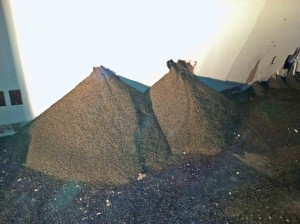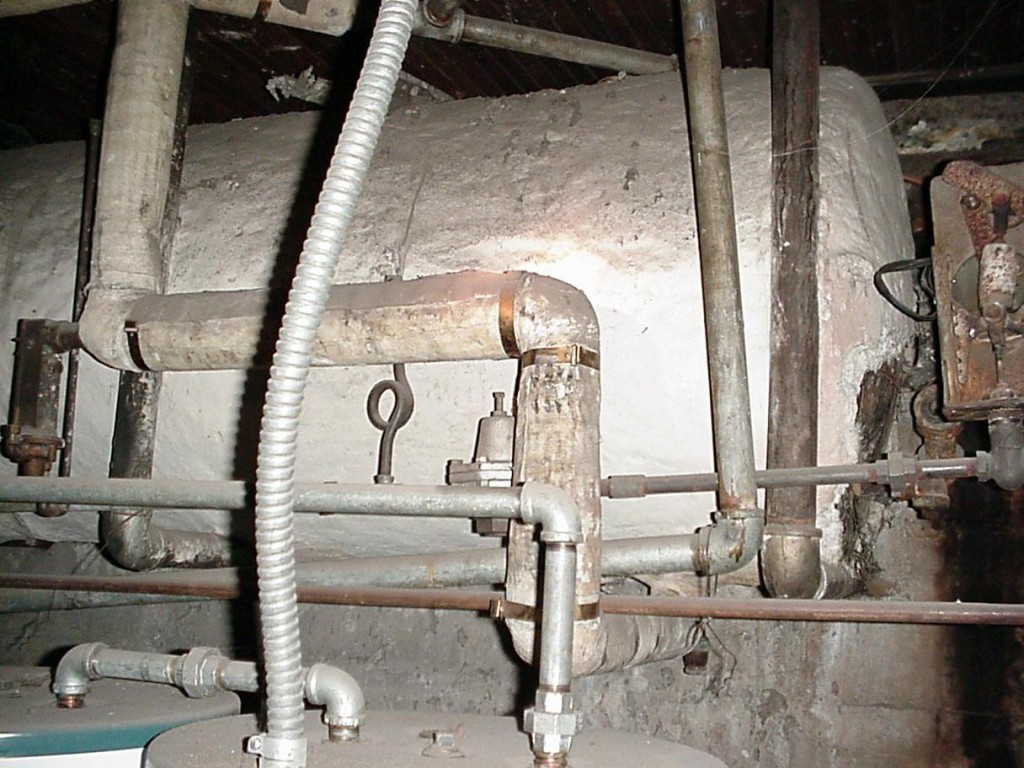Entries tagged with “1%”.
Did you find what you wanted?
Fri 22 Mar 2013
It’s always fun to hear about new/different situations especially when the contractor handles it properly.

During the start of a demolition on a 1989 structure, the first swing of the hammer produced a pile of vermiculite sand.
After some discussion on “what in the world is this doing inside a wall cavity“. The contractor stopped work, had an asbestos test performed and quarantined the area. The bulk sampling for asbestos came back with the report of “asbestos containing, but less than 1%“. Well, as you know (and as I have mentioned earlier) it may not be safe to treat this product like every other demolition project. In this case, the asbestos was very friable and by opening the wall cavity, it had definitely been disturbed.  The contractor quickly set up some procedures. Here they are:
- Stop work in area. Quarantine area and place warning on doors.
- Train employees & subcontractors onsite to hazard (asbestos).
- Abatement contractor will remove wall & vermiculite
- Abatement contractor will treat the material as if it is asbestos containing
- Once the area is abated. An aggressive clearance test will be performed to assure no airborne levels of asbestos are present.
But why in the world was it in there in the first place? The best guess is it was added as a sound proofing / noise dampening for a air conditioning unit (actually a liebert unit) located on the adjacent wall. No other wall cavities contained the material.
Mon 24 Sep 2012
Posted by admin under Air Monitoring, Asbestos, Management, OSHA, Safety Programs, Training
Comments Off on I have asbestos, but it is less than 1%.
Assume your general contractor reports that he has found a material (floor tile, popcorn ceiling, etc) with less than 1%. He wants you to remove it with the rest of the demolition because, as you know, “…if it’s less than 1%, it’s NOT considered asbestos containing!”.
Are you ok to remove it?
Yes, and no. There is more to consider. The “1% rule” (as it’s called) as it is called states that they only regulate asbestos containing materials if they contain more than 1% of asbestos. Here are a few other considerations:
- OSHA definition. Don’t get stuck on the definition. If you have employees, you must still follow parts of the OSHA rules. At a minimum, you must train your employees, work practices, clean-up and disposal requirments. More details on training here.
- How were the samples taken? If one bulk sample shows less than 1% asbestos, you still might have a problem. According to the EPA/AHERA sampling rules, some types of materials must have up to 7 samples taken. This rule is in place because, back in the day, asbestos was added to joint compound (or anything similar) and it could really vary in amount according to where you take the sample. In addition, OSHA does not allow for composite sampling (combining the layers).
- Do you know that 0.99% asbestos is still bad for you? Asbestos is a carcinogen. The greater the exposure, the greater the risk of disease. Any exposure could be the one to cause the disease. If the material is friable and you are disturbing it, I would NOT recommend performing that activity. Hire an abatement contractor.
- Finally.Let’s assume it’s non-friable, you are not going to disturb it (when removing it) and it’s less than 1%. What will you do if your neighbor next door decides to call OSHA/EPA? Do you have a written plan and procedure? Have your employees been trained on the hazard? How to remove it? How to dispose of it? …Sometimes bad publicity will get you in worse trouble than any monetary fine.
 

